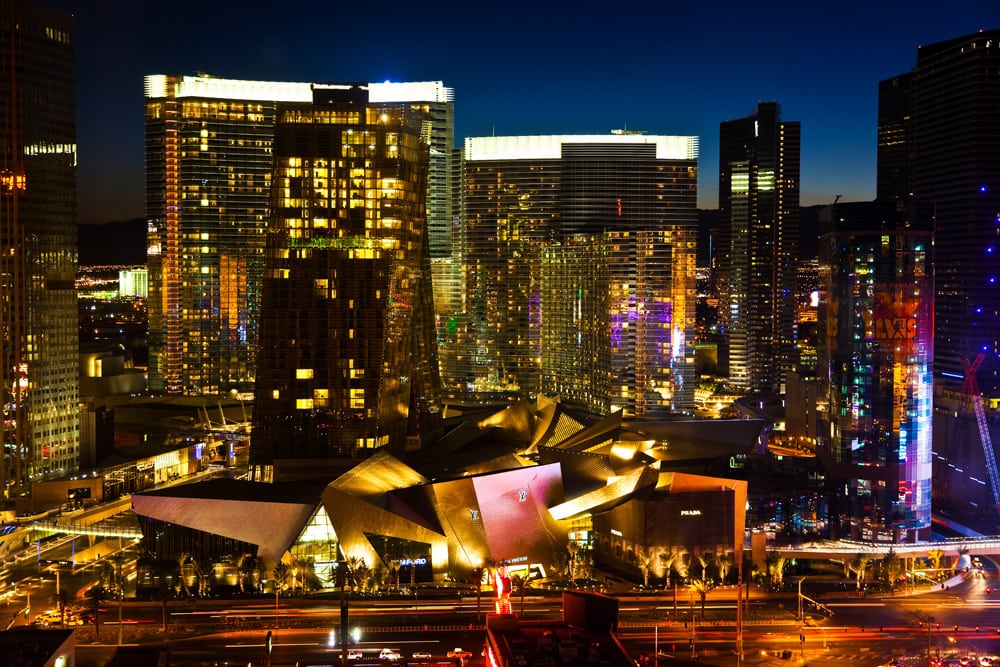Why Las Vegas' CityCenter resort and gaming complex isn't a laughing matter

Skift Take
CityCenter never had it easy.
MGM Resorts International announced plans to build the $4 billion development in 2004 during the height of Las Vegas' boom. By the time the project wrapped up four years later, its construction budget had ballooned to almost $10 billion and the city was sinking into a historic recession that almost forced the project into bankruptcy.
Though MGM officials felt pressure to mothball the complex, they trudged ahead and opened CityCenter in 2009. In the years since, the complex has been called a failure, a Tower of Babel, a sign of Las Vegas' hubris and a symbol of what can go wrong.
But CityCenter appears to have turned a corner. It posted an all-time earnings record during the first quarter of this year and helped boost MGM into the black.
MGM reported its best results since the beginning of the downturn five years ago.
During the first quarter of 2013, CityCenter reported a cash flow of $93 million, three times the amount it pulled in the year before. Net revenue generated at Aria, Vdara, Crystals, the Mandarin Oriental and numerous residential units rose 32 percent, to $315 million.
Strip analyst Chris Komanowski of CB Richard Ellis said it isn't unusual for high-end hotels to take a couple of years to find their footing.
"This (time frame) is really where a luxury property is beginning its life as a stabilized business," Komanowski said. "That typically takes time."
Analysts attribute CityCenter's success to a rebounding tourism market. Last year, a record 39.7 million people visited Las Vegas.
The Strip in general also is making more money than it ever has. Gambling revenue soared to $696 million in February, the highest single-month total ever recorded. Consumer confidence is rising, and visitors are beginning to spend more.
Still, many local resorts continue to struggle. Komanowski pegged CityCenter's specific success to a growing number of visitors who demand high-end options when they visit Las Vegas.
"You have kind of a different animal attracting different people," Komanowski said. "They're looking for more luxury amenities."
And today's tourist does much more than gamble. More than 69 percent of casino visitors in the past year ate at fine-dining restaurants, 55 percent saw a show or concert and almost 45 percent visited a club, according to the American Gaming Association. CityCenter offers all those options.
"The trends are positive," Komanowski said. "We expect extended and steady growth."
CityCenter's journey from the red was not an easy one.
MGM announced in 2004 it would partner with Dubai World to build the hotel-condo complex. Economically, the year marked one of the best in the Strip's history. Visitation numbers surpassed 37 million, an increase of 2 million from the previous year, and continued to grow.
The project initially was estimated to cost $4 billion. In late 2005, MGM upped it to $5 billion. The following year, the price tag jumped to $7 billion.
By late 2008, CityCenter's construction budget peaked at $9.3 billion -- just in time for the recession.
"It created chaos for us," CityCenter President Bobby Baldwin said.
A few months later, on the heels of Wall Street warnings, MGM launched a cost-cutting program that slashed the building budget to $8.9 billion. It wasn't enough. When MGM released its annual report in 2009, operators feared they wouldn't have enough cash to pay off their debt. They worried bankruptcy would delay CityCenter's opening.
MGM pushed forward anyway, delaying the opening of the Harmon Hotel to save about $200 million. Clark County officials halted work on the 49-story hotel-condo project in 2008 because of construction flaws.
MGM and Dubai World later announced they would scrap plans for the Harmon's top-floor condos and cap the building at the 26th floor. Today, the Harmon remains closed, mired in lawsuits.
During the same time, MGM's stock plummeted from $99.75 a share to $1.89 a share.
"(CityCenter) couldn't have opened at a worse time," Komanowski said. "The property appeared with a lot of difficulties."
Baldwin said MGM invested so much money into CityCenter, there was no way the project could have been mothballed or stalled.
"There was no stopping for us," Baldwin said. "Looking back on it, it wouldn't have made any difference if we opened it earlier or later. We would have ended up in about the same spot."
Many experts agree. Although MGM's business plan was good, its timing was not.
"They were knee-deep in it," said Yale Bock, a stock analyst with YH&C Investments. "Then, everything changed -- land values, moods, construction costs, gas prices."
CityCenter has managed to build its equity to about $294 million, but it still owes about $1.5 billion, a 5-to-1 debt-to-equity ratio. Baldwin couldn't say for certain how long it would take the development to make that money back.
"We have a long way to go," he said. "Everything is on the move. It's part of a slow rise. It's something you see all around Las Vegas."
(c)2013 the Las Vegas Sun (Las Vegas, Nev.) Distributed by MCT Information Services. ![]()




